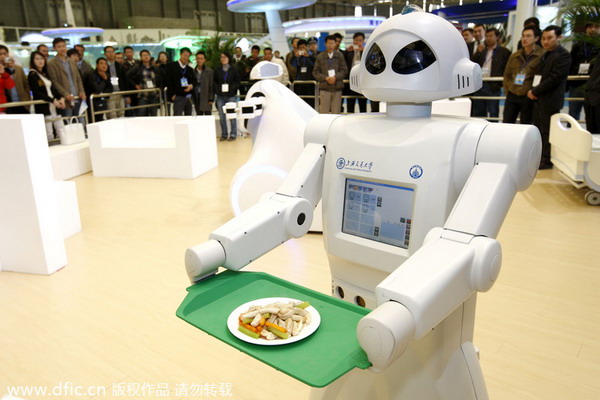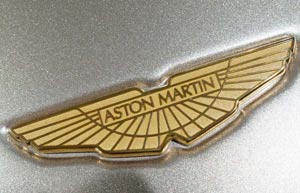'Made in China' climbs global value chain
(Xinhua) Updated: 2014-03-12 10:34
|
 |
|
Visitors look at a robot performance during the China International Industry Fair 2009 in Shanghai. The "made-in-China" label has been shedding its cheap image and reputation for low value-added goods as China takes over the United States to become the top powerhouse in global trade. [File photo / dfic.cn] |
BEIJING - Manufacturing is usually slack in early spring, but HuagongTech's workshops are rumbling to meet a big contract for the company's latest laser.
The central China high-tech firm, with its cheap and efficient auto welding laser, beat foreign rivals to supply a joint venture of Ford and home-brand JMC.
"When HuagongTech was founded in 1999, we had to import core components from Western countries," Ma Xinqiang, head of the company, told Xinhua on the sidelines of the ongoing session of the national legislature.
|
 |
"After we stepped up investment in innovation and talent, our lasers broke foreign dominance and now boast a global reputation," said Ma.
HuagongTech's ultraviolet lasers have been chosen by global names like Samsung and Microsoft. The company is now doing business in more than 40 countries and regions.
"Chinese enterprises are engaging in more value-added business,shifting from selling cheap goods to conceptualizing and delivering high-end products," said Liu Zhibiao, head of Jiangsu Academy of Social Sciences.
China has made unprecedented strides in development, but the most astonishing tale is about the so-called "factory floor of the world."
Chinese enterprises, especially in the manufacturing sector, used to live by wafer-thin margins without holding core intellectual property rights.
Research in 2013 by Robert Koopman and Zhi Wang from the US International Trade Commission, and Shang-jin Wei from Columbia Business School, showed domestic value-added accounting for less than half the value of the China's processing exports in 2004.
"China needs to shift up the global value chain," said Karin Finkelston, vice president for Asia Pacific of the International Finance Corporation, a member of the World Bank Group.
In fact, Chinese governments and entrepreneurs have taken action.
In 1993, the textile industry was China's second largest in terms of output after steel production, but telecommunications, computers and other electric equipment became the second largest in 2011, according to Ryan Rutkowski, a China analyst with Washington's Peterson Institute for International Economics.
Silent revolution of 'made-in-China'
- NHTSA says finds no 'defect trend' in Tesla Model S sedans
- WTO rare earth ruling is unfair
- Amway says 2014 China sales may grow 8%
- President Xi in Europe: Forging deals, boosting business
- CNOOC releases 2013 sustainability report
- Local production by Chery Jaguar Land Rover this year
- Car lovers test their need for speed in BMW Mission 3
- China stocks close mixed Monday

















